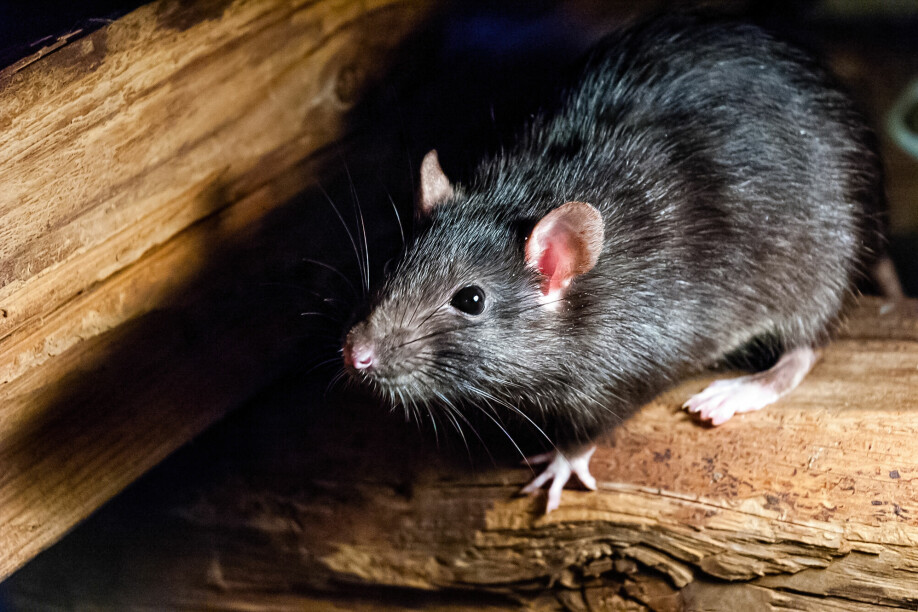
Here’s why Rattus norvegicus has taken over Europe
The black rat spread across Europe in two waves, first in Roman times and then in the Middle Ages. But today it has had to cede Europe to the ‘Norwegian’ brown rat.
Researchers from more than 20 countries in Europe have now joined forces to find archaeological remains of the black rat, which in Latin is called Rattus rattus. The skeletons with their traces of DNA date back to Roman times, two thousand years ago, and up to the 18th century.
This information has enabled researchers to say with great certainty that the black rat colonized Europe in two distinct waves.
Roman times and the Middle Ages
By conducting DNA analyses of rat carcasses from more than two thousand years back in time, researchers can see how Rattus rattus spread throughout Europe, along with humans.
The black rat, also known as the ship rat, is very fond of travelling.
The first time Rattus rattus went on a trip around Europe was during the growth of the Roman Empire. At that time, it came from somewhere in Asia — perhaps from Mongolia or northern China.
The second time was in the Middle Ages. Then it helped to spread the Black Death.
Evidence of two waves of colonizations
“We have long known that rats spread along with humans, and we suspected that the expansion of the Roman Empire could have been such an event,” said researcher David Orton at the University of York in the United Kingdom.
This is also how the black rat may have come to Northern Europe and Norway.
The researchers themselves are surprised at the extent to which their theory now proves to be true. Orton calls the research group's findings startling.
All rat bones from Roman times — all the way from England in the northwest to Serbia in the southeast — turn out to come from individuals who are genetically almost identical to each other.
This tells us that the black rat spread in a fairly simple and very comprehensive way.

The Justinian plague
When the Roman Empire collapsed and Europe declined, so did Rattus rattus.
It is still unclear whether the black rat then disappeared completely from the north and west of Europe. In the middle of the 6th century, southern Europe was hit by the Justinian plague. Was it the lack of rats that possibly kept this plague from spreading as far north as Norway?
“When rats reappear in the Medieval period we see a completely different genetic signature – but again all of our samples from England to Hungary to Finland all group together,” Orton said in a press release from the university.
In other words, the skeletal remains and DNA from completely different places such as England, Finland and Hungary showed the researchers that it was genetically the same animal that spread to all these places in Europe.
The researchers said they couldn’t have hoped for any better evidence that the black rat colonized Europe in two big waves.

‘The Norwegian’ is coming
But something happened in the 18th century. At this point, an animal appears that the English today call ‘the Norwegian’.
Other names for this newcomer, the brown rat, are sewer rat, Parisian rat, common rat — or simply the Norway rat.
What is absolutely certain is that Rattus norvegicus does not originate from Norway.
But why the brown rat, which pushed the black rat out of Europe from the 18th century onwards, became so closely linked to Norway, is more uncertain.
A possible explanation for the name can be found in the writings of the British naturalist John Berkenhout. In a book published in 1769, he explains how the brown rat came from Norway to England aboard a ship with timber in 1728.
The author Charles Dickens would later point out that Berkenhout was probably wrong. Dickens believed that the naturalist had confused the brown rat with a small rat-like animal that lives in Norway and is called a lemming.
Naturalists have subsequently concluded that Rattus norvegicus probably originated in Mongolia or northern China.

The Norway rat thrives in sewers
The brown rat turned out to be as attached to humans as the black rat had been.
Today, Rattus norvegicus lives in most places in the world where humans live.
Rattus norvegicus is larger and more aggressive than Rattus rattus. It is also less picky about its food, and tolerates better extreme weather conditions. It especially likes damp places. Sewers in cities and towns provide an excellent living environment for the brown rat.
The international research team, which has been led by British and German researchers, believes that their study clearly shows how the spread of a small mammal can be linked to humans and to historical and economic events.
Researcher Alex Jamieson at the University of Oxford points out how fascinating the black rat's history in Europe is. This story may have ended up in the shadow of the brown rat's triumphal procession through Europe’s sewers.

Extinct in Norway
The black rat, Rattus rattus, is now considered extinct in Norway, although animal rights activists and others haven’t been too up in arms about it.
After the black rat had to give ground to the brown rat in both cooler and more temperate parts of the world, its populations have concentrated in warmer parts of the Earth.
Today it thrives in India. Perhaps it was here that it once had its origins.
The black rat is extremely happy if it can it find its way into grain warehouses and other places where people store food. It is also a fantastic climber. In warmer parts of the world, the black rat often builds nests up in palms and other trees. It also thrives high up in tall houses.
Translated by Nancy Bazilchuk
References:
He Yu et.al.: Palaeogenomic analysis of black rat (Rattus rattus) reveals multiple European introductions associated with human economic history. Nature Communications, 2022.
New research reveals how the black rat colonized Europe in the Roman and Medieval periods. Press release from University of York / EurekAlert, 3 May 2022.
———
Read the Norwegian version of this article at forskning.no

































